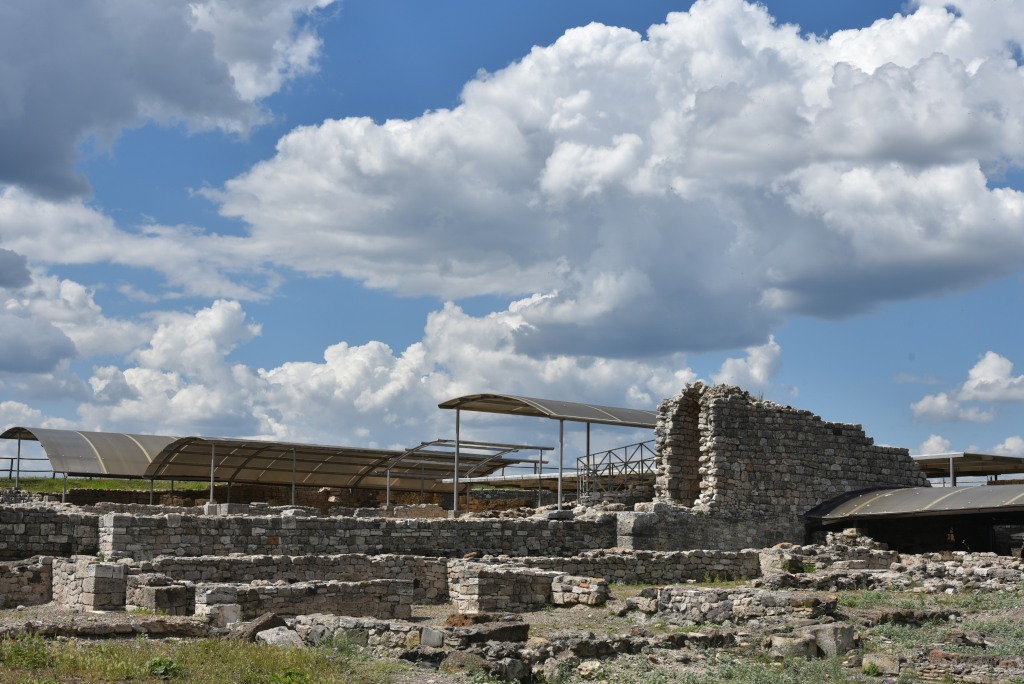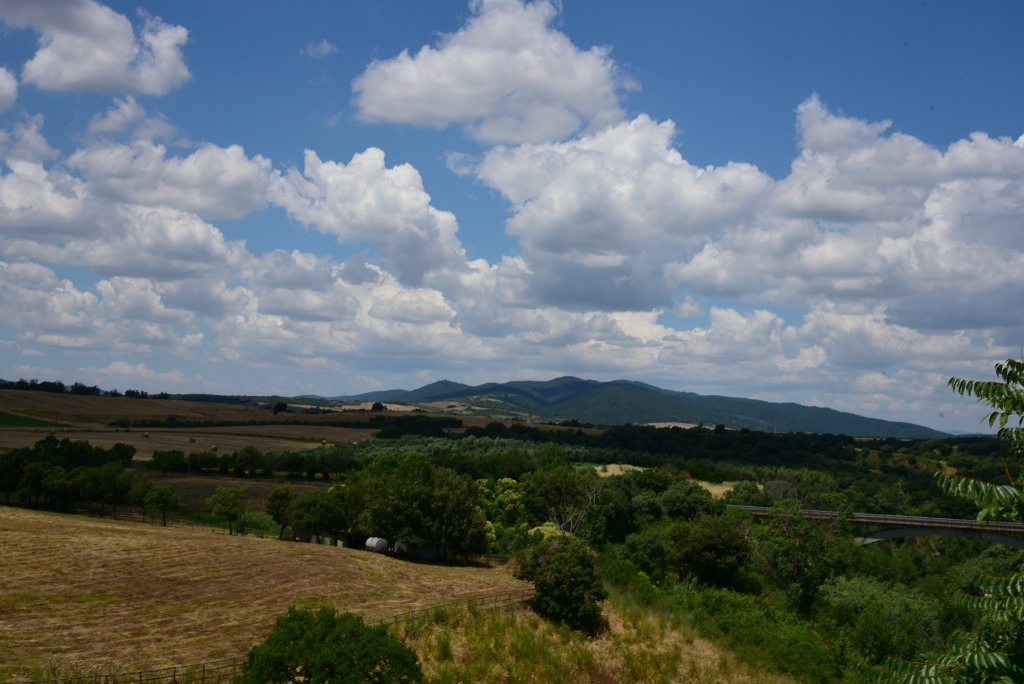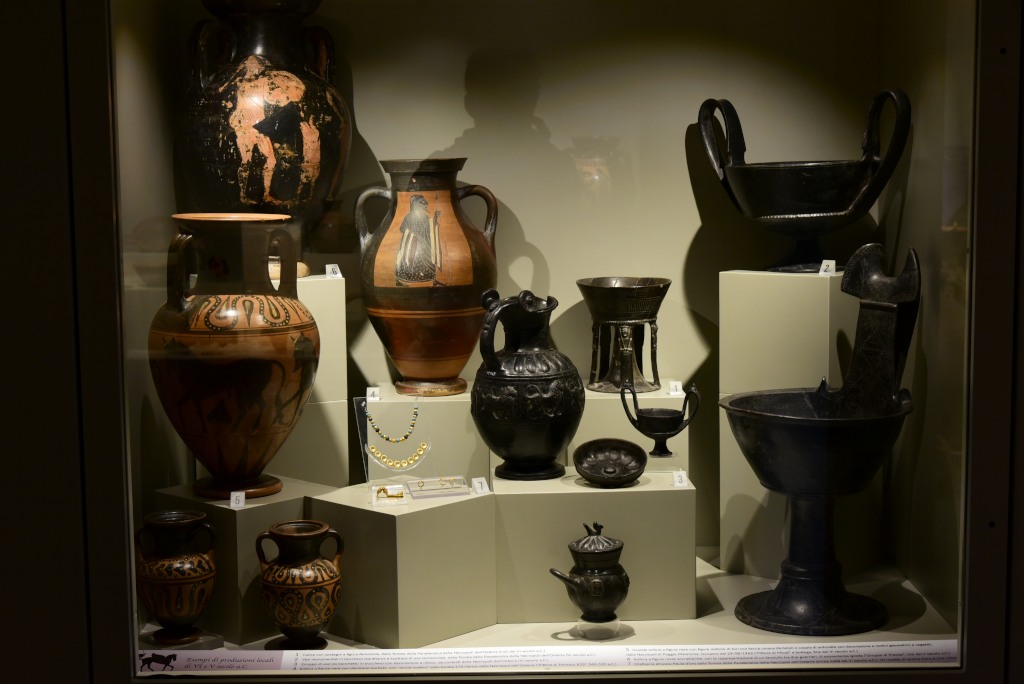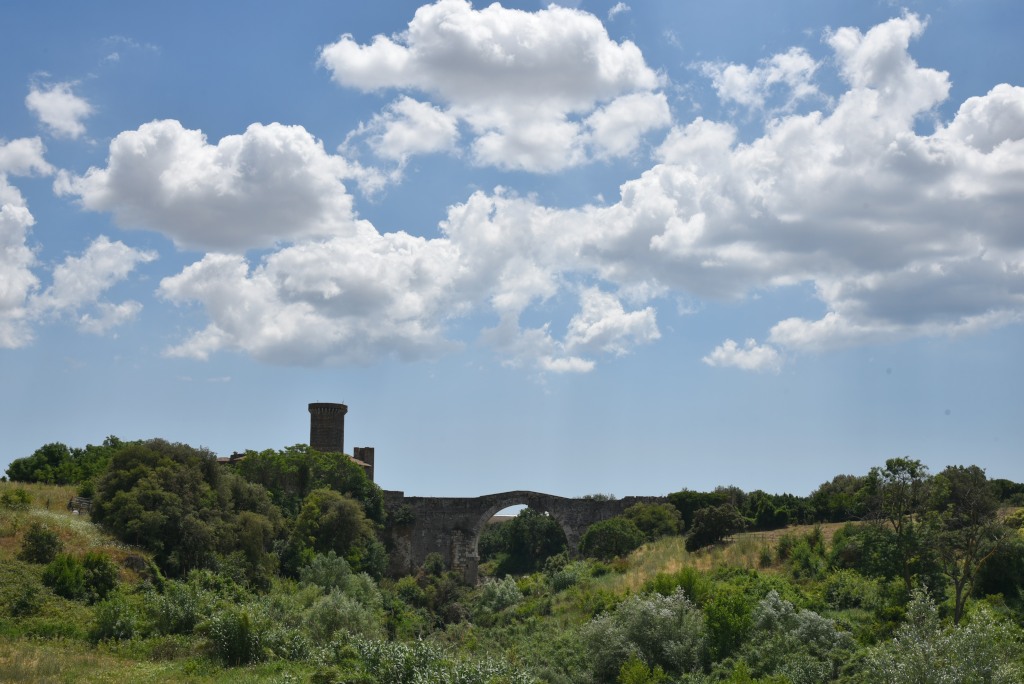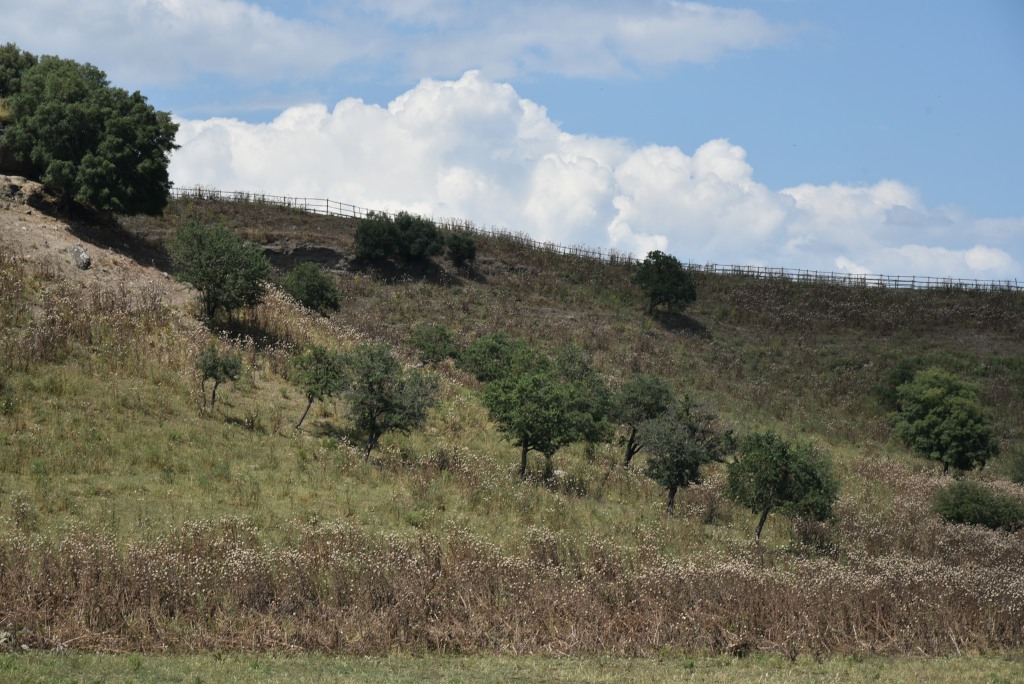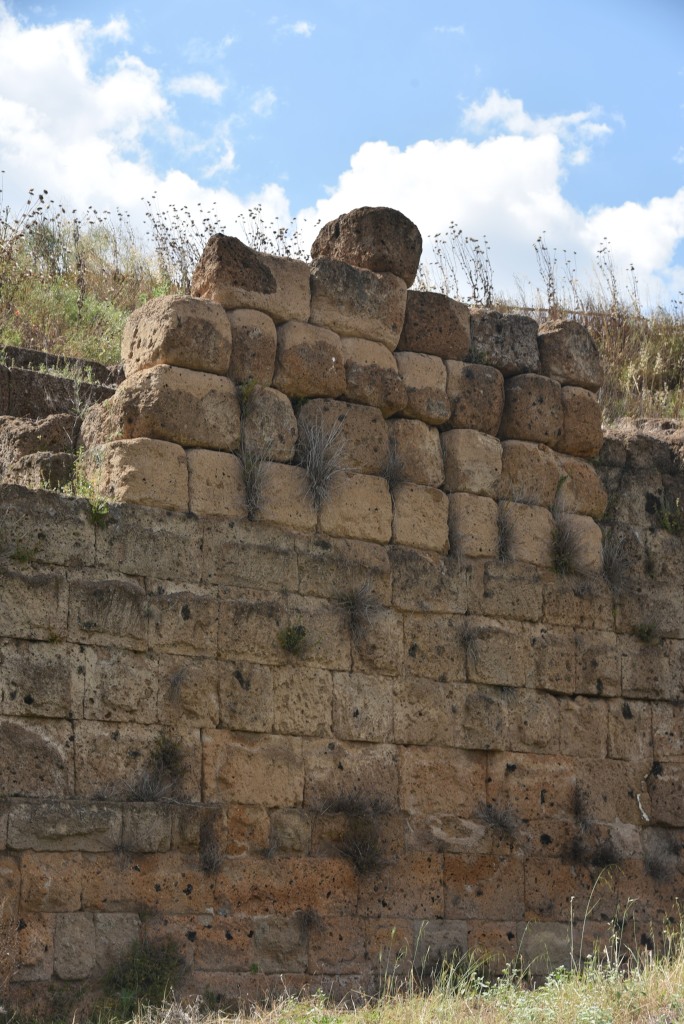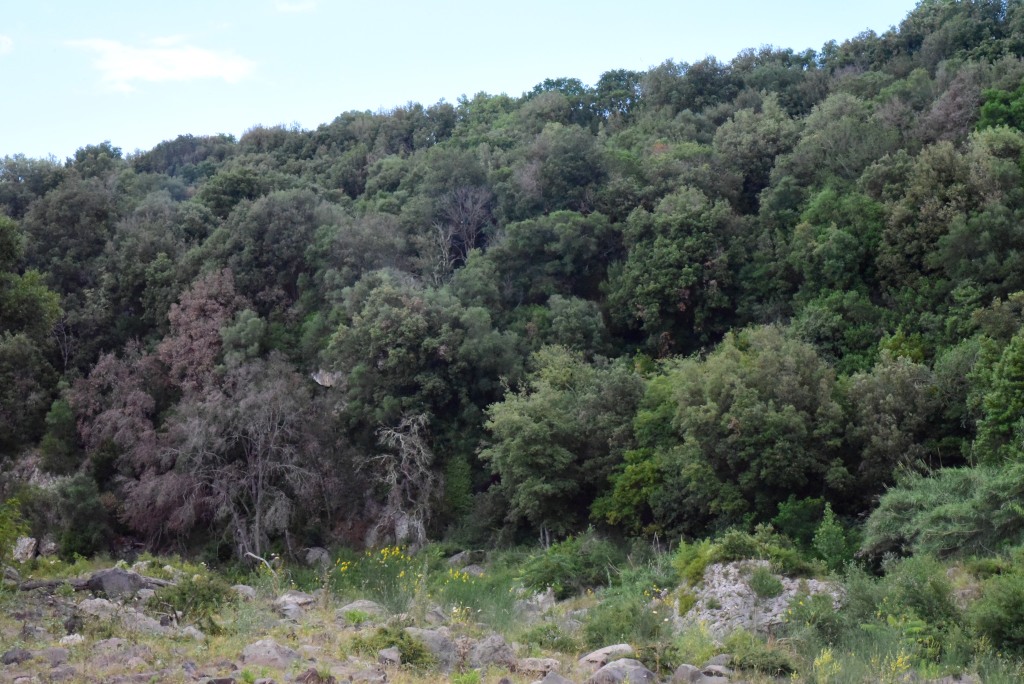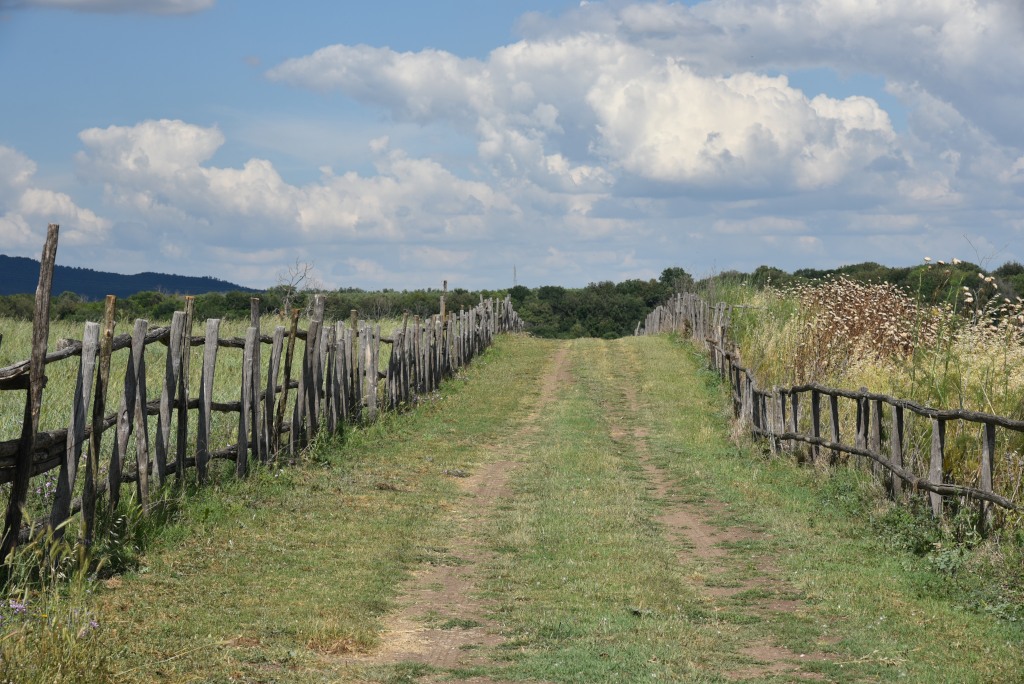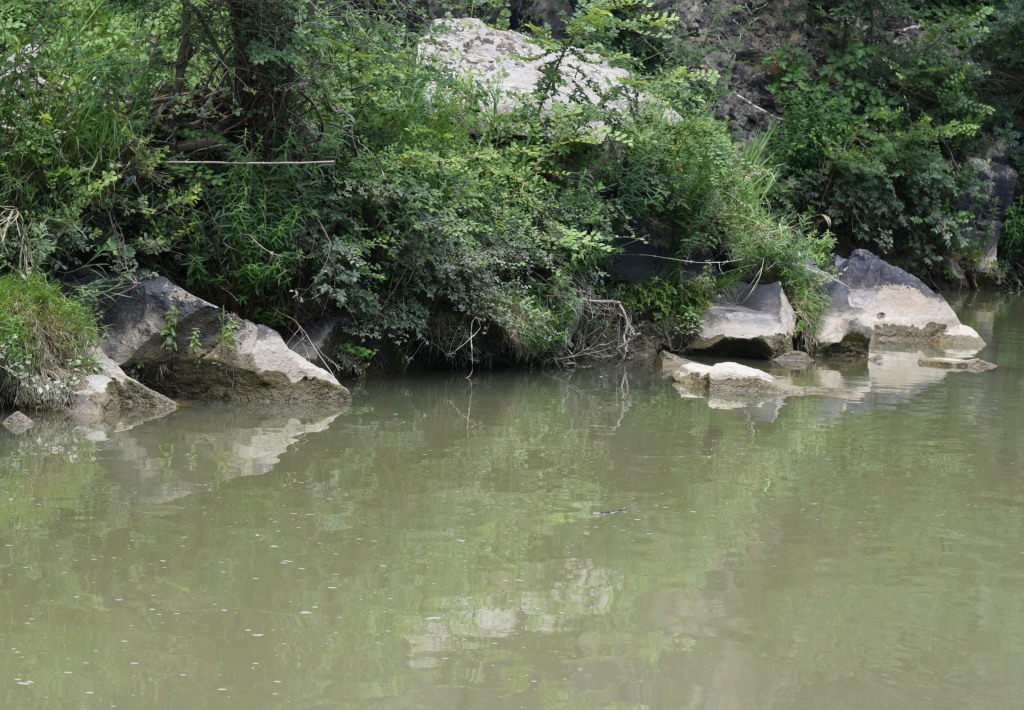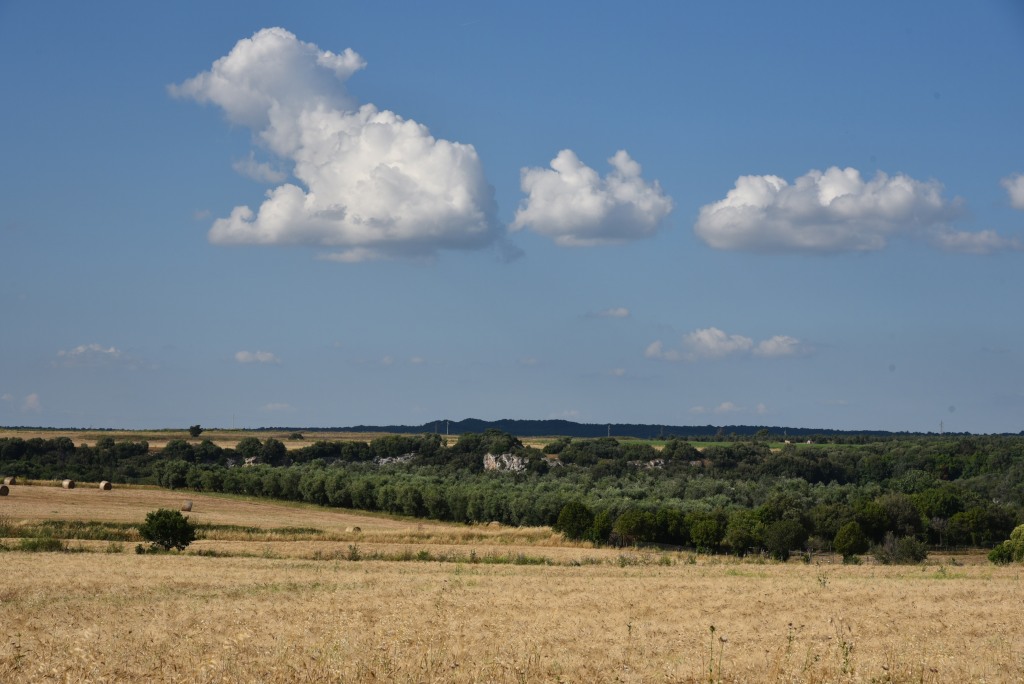June 16, 2018
Vulci is the site of one of the greatest of the ancient Etruscan cities, and is located near the coast of the Tyrrhenian Sea, some 80 km northwest of Rome. The Castello dell’Abbadia erected in the Middle Ages serves as museum for artifacts originating in Vulci.
Sections of the walls and gates are still visible in different zones of the city, including on the plateau between the acropolis and the East Gate. In the valley outside the east gate, a massive wall was built along the river bank allowing boats traveling from the sea to anchor against. Vulci’s walls were built to repel potential attacks of the Romans, although the site was ultimately conquered by Tiberius Coruncanius at the end of the 3rd century B.C.
In the Orientalizing period from the late 8th century B.C. onward, there was a gradual increase in the richness of the artifacts placed in the tombs found at Vulci, with a greater variety of precious metals attesting to Vulci’s growing control and exploitation of the territory and subsequent opening of the city to the more developed Mediterranean centres at the time.
Vulci became an important point of arrival for goods coming from Greece and the Near Eastern coast. The goods, artisans and new technologies arriving from elsewhere effected a change in production processes in the region. Greek pottery with red geometric decoration began to spread alongside local products such as black bucchero.
From the late 7th century and throughout the 6th century B.C., a consistent increase of trade with the Hellenic world took place. Amphorae used to transport wares spread into Etruria, carrying wine and oil from Corinth and Laconia. Vessels for banquets and containers for perfumes and unguents came from Corinth, Rhodes, and other cities of the Eastern Mediterranean. In addition, fine ceramics were imported from the Greek cities in southern Italy. After unloading their cargo in the coastal ports of Etruria, ships would continue on their journey to ports further west, along the southern coasts of France and Spain. Enormous local demand also triggered the growth of local production, in particular, elaborate Etrusco-Corinthian pottery.
Between the late 7th and 6th centuries B.C., port cities were built along the coast of Etruria. Some 12 km south of Vulci was the main maritime port of Vulci, at the time known as Regisvilla or Regae. The roads of the area were littered with the fragments of pottery imported from Athens between the 6th and 5th centuries B.C., the period of Vulci’s greatest wealth.
During the 7th century B.C. monumental funerary architecture was developed, following the form of the tombs built at Cerveteri. The bulk of the construction of Vulci occurred as of the late 6th century B.C., during which time the most important sacred and civic buildings were erected. The development of the city slowed dramatically by the 5th century B.C., when Vulci lost its commercial importance due to the loss of Etruscan power to the Greek colonies in southern Italy.
During the second half of the 4th century B.C., imposing fortifications were built at Vulci to provide increasing protection from enemies. This includes the West Gate, with its triangular bastion in which a Y-shaped passageway provides for the transit of foot traffic while carts used the basalt-paved roads on the side. The design was intended to buffer against potential frontal assault, while not impeding the regular flow of traffic.
Kilns were found onsite for drying clay. These kilns were formed by a firing chamber and floor, with a praefurnium for the fire itself. These kilns were used in the first half of the 3rd century B.C. for firing ceramic vases. In burial sites dating from later periods, grave goods from female tombs make reference to the nuptial sphere (mirrors, jewelery, toilet implements), while those in male graves include vessels linked to the drinking party, weapons and tools.
The Grand Temple measured 36 by 24 metres, was lined with columns on all sides and on a podium of tufo blocks. The columns and roof of the temple were built of wood, the roof decorated with clay statues, and in the interior of the temple (presumably) stood a statue of Minerva.
The Villa of the Cryptoporticus represents a large residential complex and includes a large domus preceded by a series of small rectangular rooms overlooking the main street. The structure is named for its underground rooms, and was built in the classical style of noble Roman houses (domus with atrium and peristyle). Constructed in the late 2nd/early 1st century B.C., it underwent numerous renovations in the Augustan period, then further changes were made between the Flavian and Hadrianic periods.
The Mitreo is a place of worship featuring a statue of Mithras at at the end. Along both sides of the locale are podiums, built upon six small arches, equivalent to the number of steps required to reach the seventh sphere, that of Mithras.
Several legends exist regarding Mithras, a divinity of Persian origin. One claims he was born from a stone, holding a sword in one hand and a torch in the other, the other that he was brought to life by a virgin in a grotto. His first act was to conquer the sun. He captured a bull, brought it into his grotto and slit the animal’s throat, whereupon the corpse of the animal gave life to all plants, the blood grape vines, bone marrow wheat fields, and from its semen mankind was born.
The worship of Mithras was one of the eastern cults diffused throughout Rome at the end of the 1st century A.D. Eastern Mithraism began as a secret religion, hence practiced in underground locations. Mithraism reached its peak in the 2nd – 3rd century A.D., spread to all classes of society, although it never became an official religion. The worship of Mithras was maintained as a mystery, the meetings of worshippers restricted to men, who would gradually proceed through seven steps in a hierarchy (crow, to nymph, to soldier, to lion, to Persian, to sun courier, and finally to father) in order to reach Mithras.
Given the relatively untouched terrain the archaeological site spans, it is also home to a diversity of indigenous flora, including buckthorn, bay laurel, rock rose, juniper, lavender, holm oak, myrtle, oleander, olive and rosemary.
The archaeological sites closer to the northern entrance of the park occupy a relatively open and windswept terrain. Further to the north, the park becomes wilder, culminating upon the tranquil Lago Pellicone, a pristine lake set against a dramatic backdrop, and providing a welcome respite from the long trek through Vulci’s expanse.
The return to Canino past the Castello della Badia offers a dramatic culmination to this remote and yet extravagant Etruscan city.
(Narrative excerpted from on-site signage and Wikipedia)

